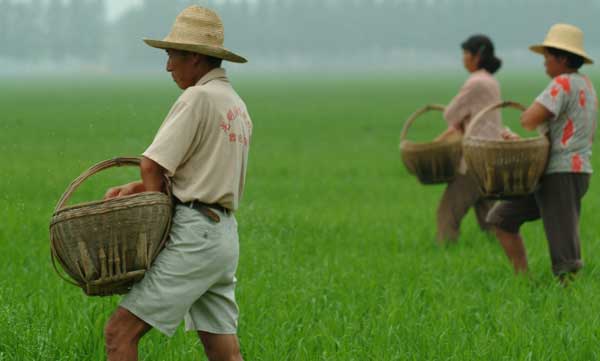
For the past four decades, the global rice market has been dominated by a few exporters, namely, Thailand, Vietnam, the United States, and Pakistan, accounting for 60–70% of the total exports. During this period, Thailand has remained the top rice exporter in the world. Unlike the export side, the import side looks quite fragmented, with many countries each importing a small amount of rice. The top six importers account for only 20−30% of the market share.
New roles for China and India
Through the years, both China and India, the top two rice producers and consumers in the world, have played a minor role globally with occasional exports and imports. Despite India’s rise as an exporter since the mid-1990s, both these countries, which account for half of global rice production, have largely focused on domestic food security. Trade is an afterthought for these two giants and it is mostly used to manage occasional surpluses and deficits.
This raises another important question: Will China go back to its traditional insignificant role in the global rice market (low imports and exports) and India go back to its familiar territory of mainly exporting basmati rice and will self-sufficiency remain their primary motto? Or will they continue with the recent trend and evolve as dominant players in the global rice market in the coming years?
Both India and China have maintained their respective positions as dominant exporters and importers in the global rice market in the first quarter of 2013. From January to March 2013, China imported 692,200 tons of rice (according to oryza.com) whereas India exported nearly 2 million tons of rice (data compiled from different sources). If this trend continues, they are likely to grab the top importer and exporter spots respectively by the end of 2013.
Some indications suggest that China and India are here to stay for the “long haul.” In India’s case, the government wants to move nonbasmati rice area from the northwestern states of Punjab and Haryana, which are plagued by water shortages and pest and disease problems, to eastern India. Several programs such as the National Food Security Mission, National Rural Livelihood Mission, and Bringing Green Revolution to Eastern India have been rolled out by the government to expand rice production in the eastern states, and the impact is already evident from the rapid rise in production in the last few years.
The Chinese government is also trying to expand rice production to keep up with the demand, but the rapidly rising costs of production and pressure on rice area from other competing crops are likely to keep imported rice a lot cheaper than producing rice domestically. Unless the Chinese government is strongly determined to achieve rice self-sufficiency through trade measures, it is reasonable to assume that Chinese imports will continue in the near term to mid-term.
Some implications
In addition, the disparity in the estimates of Chinese supply and use data by two major sources (USDA and FAO) is likely to create problems in the functioning of the market if China remains in the global rice market as a dominant player for the long haul. For example, FAO projects Chinese rice stocks to be more than 50% greater than those of USDA in 2012-13 (94.2 million tons vs 46.2 million tons). In the past 3 years, the FAO estimates indicate more than a 20-million-ton rise in Chinese stocks compared with only 6 million tons in the case of USDA. The difference in domestic consumption between USDA and FAO estimates for China is more than 10 million tons.
All these disparities in supply and use data did not really matter as long as China was mostly self-sufficient and didn’t trade much. But, accuracy and timely availability of this information will be essential for proper functioning of the market once China becomes a dominant player in the global rice market.
_________________________________________
Dr. Mohanty is the head of the Social Sciences Division at the International Rice Research Institute.